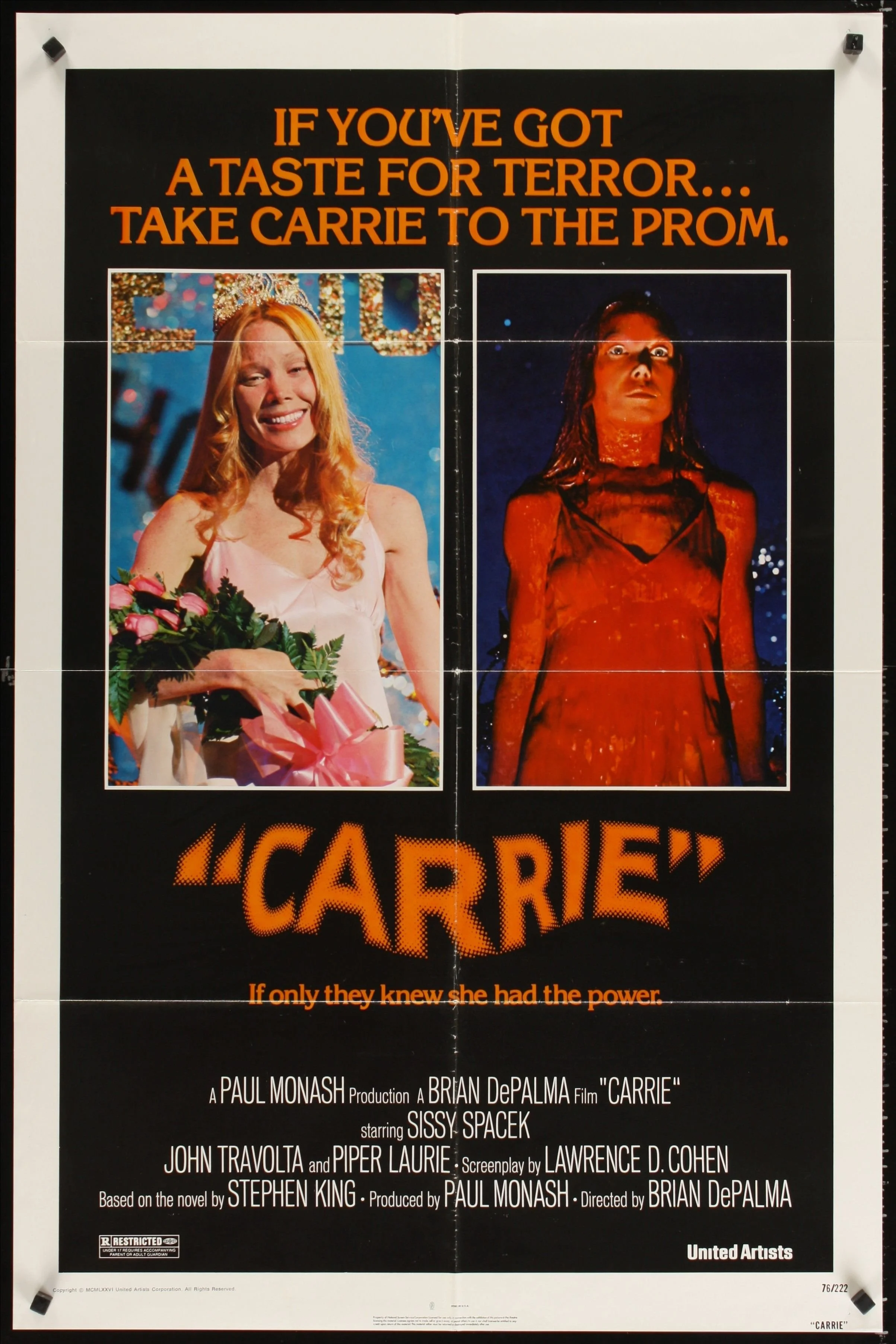5:23:23
Last weekend I rewatched Brian de Palma’s Raising Caine (1992). The film, which has a Dressed to Kill ending, exposes what almost all of De Palma’s 1970s movies were really about: doubles, split personalities, Mkultra mind control—a trope so central to the 70s—and trauma-based alters and government engineering. De Palma explained this strange dissociative personality trend using the horror/thriller/occult premise and hidden symbolism of telepathy and telekinesis: Sisters, Carrie, Obsession, The Fury, Dressed to Kill, Body Double. But where did this strange power suddenly originate? What was causing it? Telepathy was not the actual source—The Fury, with its CIA/Mossad (Israel intelligence) government plot, makes this absolutely clear. The source was engineered. The source was the extrasensory children of Mk-ultra.
While Carrie’s telekinetic “fury” officially emerges as a response to her bullying classmates, the real source of her trauma is ancestral—the product of her mother’s abuse, which splits her. There are two Carries—good Carrie and bad Carrie. Innocent Carrie and (government) assassin Carie. Like Bruce Banner in 1970s The Incredible Hulk TV series, something causes her to flip. To go into a trance. The Incredible Hulk, which I found incredibly sad as a kid, was my favorite show. Banner refers to his alter as “the beast” and “metamorphosis.” “It’s like having a demon inside of you.” The Incredible Hulk is a version of The Nutty Professor.
Banner could very well be a Phoenix Project creation. Psychic Robin in The Fury (the son of an ex-CIA agent in Israel) might be the made-assassin of the Mossad.
In one scene, Carrie shatters her bedroom mirror by looking at her reflection, splitting the glass. Her personality has been fractured at the core. But who and what fractured it?
Carrie’s mother is obsessed with her (virginal) daughter’s sexuality, which suggests Carrie’s abuse may have been sexual. Did her mother herself corrupt her?
De Palma has Carrie burn down her house (sinking it into the Plutonian underworld) with her mother and her both in it, like Persephone and her abducted daughter.
Raising Caine is the filmic culmination of our shadow government Mkultra programs and their terrible human experiments during and after the second World War. De Palma’s—born September 11, 1940—characters were victims of the post-Operation Paperclip generation. Their mysterious and clandestine supernatural “powers” are the result of the experiments and tortures by government and central intelligence agencies.
Why doesn’t anyone ever talk about this when it comes to De Palma’s early films, which seem to me to be disclosures masked as fiction?
I searched online to see if anything had been written about Mkultra or even PSI research in De Palma’s work, which is essential to the construction of Mkultra and the celebration of dissociation in cinema. Shockingly nothing. Not a single article. It might have been on the internet at one point, but now so much of what was once available on the Web has been scrubbed by the “disinformation” police (Ministry of Truth)—Google’s deep state AI systems. I did find this. And there is Pulitzer Prize finalist Annie Jacobsen’s book Phenomena: The Secret History of the U.S. Government’s Investigations into Extrasensory Perception and Psychokinesis. The CIA, the American military, and the Stanford Research Institute—a programming hub for Mkultra, where cybernetic patents were developed, writes FightingMonarch.com—often used their experiments in ESP as a cover for mind control programs, weaponizing extrasensory perception, cloud bursting, remote viewing, telekinesis, walking through walls, and using psychics as guinea pigs, as we see in The Fury.
De Palma knew this and brought it to light in his movies.
In American science fiction, which means the CIA.
Blow Out makes absolutely clear that De Palma was well aware of our post-war government conspiracies, social engineering, and political cover ups. There is no way all these things do not dovetail for him. There is no way they are random plot lines, or purely for genre shock. There is no way the “horrors” and crimes in his Hollywood films are simply fictitious inventions. The only films, pre-1990, in which this might be the case are Scarface, The Untouchables, and Bonfire of the Vanities—where De Palma moved onto true social corruption and organized crime narratives with Scarface and Carlito’s Way. Crime families, gangs, mobsters, gambling, drug trafficking, the decadence and perversions of the elite class.
After Raising Caine, De Palma never returned to DID plot lines (De Palma also recognized that transgenderism was a trauma-based dysphoria) in his work, apart from maybe Femme Fatale in 2002. Aside from David Lynch, the 1980s mostly abandoned the split personality trope—what one critic writing about De Palma, calls “DID movies”—for the triumph and social rehabilitation narrative. The egoic 90s shifted to (the neurosis of) the interpersonal. But the last 10 years we have seen a huge resurgence in the dissociation disorder theme. As in life, alters, doubles, and B-clusters personality types are literally everywhere now, in every genre—HBOs Barry comes to mind, as does Netflix’s You. There is no original personality anymore. There is no recovery of Truth. There is no coherent self. There is no healing or change. They want us to believe there is only the socially controlled mind. The brutalized human psyche.
We didn’t understand what we were really seeing then, until today. The truth of the past arrives years later, in the future.



